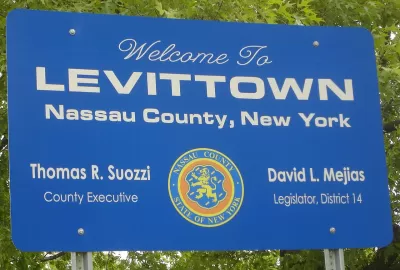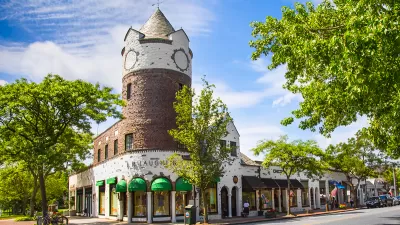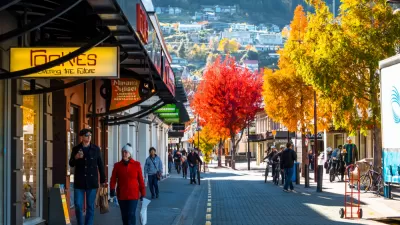Although it hosts some of the nation’s first and most successful auto suburbs, Long Island has experienced a downturn. This infographic-focused piece delves into the reasons why.

Drawing from research published by the Long Island Index project, Tanvi Mishra reports on flagging development in the area. The ills of Long Island correlate with wider trends associated facing postindustrial areas and the suburbs built for mid-century workers.
The article discusses an exodus of manufacturing jobs, once plentiful in the aerospace and defense sector. Outsourcing and the westward migration of those industries has made it difficult for firms to stay put. Also on their way out are younger workers, discouraged by a lack of residential space and job prospects. An abundance of single-family homes, and little else, accounts for their dissatisfaction with Long Island's housing market.
On a hopeful note, potential fixes include installing denser, multi-family housing and incentivizing growth industries—such as healthcare—to set up shop. Implemented well, these solutions could add 73,000 new jobs by 2040 and revitalize the region.
FULL STORY: 3 Reasons Long Island Is Dying

Planetizen Federal Action Tracker
A weekly monitor of how Trump’s orders and actions are impacting planners and planning in America.

Maui's Vacation Rental Debate Turns Ugly
Verbal attacks, misinformation campaigns and fistfights plague a high-stakes debate to convert thousands of vacation rentals into long-term housing.

Restaurant Patios Were a Pandemic Win — Why Were They so Hard to Keep?
Social distancing requirements and changes in travel patterns prompted cities to pilot new uses for street and sidewalk space. Then it got complicated.

In California Battle of Housing vs. Environment, Housing Just Won
A new state law significantly limits the power of CEQA, an environmental review law that served as a powerful tool for blocking new development.

Boulder Eliminates Parking Minimums Citywide
Officials estimate the cost of building a single underground parking space at up to $100,000.

Orange County, Florida Adopts Largest US “Sprawl Repair” Code
The ‘Orange Code’ seeks to rectify decades of sprawl-inducing, car-oriented development.
Urban Design for Planners 1: Software Tools
This six-course series explores essential urban design concepts using open source software and equips planners with the tools they need to participate fully in the urban design process.
Planning for Universal Design
Learn the tools for implementing Universal Design in planning regulations.
Heyer Gruel & Associates PA
JM Goldson LLC
Custer County Colorado
City of Camden Redevelopment Agency
City of Astoria
Transportation Research & Education Center (TREC) at Portland State University
Jefferson Parish Government
Camden Redevelopment Agency
City of Claremont





























